- Home
- Simon Winchester
Outposts Page 19
Outposts Read online
Page 19
I first learned about the famous Charter—famous, that is, to every St Helenian—one sunny afternoon, when I was strolling up Napoleon Street in Jamestown. I was passing a little café, where motherly waitresses bring tea and buns each afternoon (and barracuda fishcakes for supper), and where the customers are slow old ladies in enormous summery hats who look like refugees from a Women’s Institute in England, only rather more tanned. One lady stepped out of the shadows as I passed and, with a quick look up and down the street to make sure no one was watching, thrust an envelope into my hand.
Inside was a letter, and a leatherette-covered diary for the year half gone, with more writing inside, and a five-pound note. It asked me to send a copy of my researches to a Saint who now lived in Yorkshire, and to make sure that ‘the sad matter of our Nationality is raised back in London. The Charter says we are British, and can come to Britain any time we want. But we can’t. The Government won’t let us. They won’t admit we are full citizens. It is very unjust. We were colonised by British people, from Britain. And now they turn us away. We want to know why?’
The document, preserved in the Castle, is written in the name of King Charles II. It is very long. The section that most Saints know by heart—or have since the Nationality Act was passed in London—runs as follows:
Wee do for us, our heirs and successors declare…that all and every the persons being our subjects which do or shall inhabit within the said port or island, and every their children and posterity which shall happen to be borne within the presincts thereof shall have and enjoy all liberties, franchises, immunities, capacities and abilities, of franchises and natural subjects within any of our dominions, to all intents and purposes as if they had been abiding and borne within this our realms of England or in any of our dominions…
In other words, the Saints are, by ancient right, as British as had they been born in Sevenoaks, or Knotty Ash. So why have they had their privileges stripped from them? And will they get them back?
A long and energetic campaign has been mounted on their behalf. (The island’s Anglican synod sent a telegram to Downing Street, which raised some eyebrows.) Calculations were made showing that even if they were handed proper British passports, and not the half-worthless ersatz papers they have today, only about 800 would ever come to settle in Britain. ‘Hardly a flood,’ said one islander. ‘You’ve nothing to be afear’d of.’
But the Government seems in no mood to budge. There was a debate in the House of Lords late in 1984, at which friends of the island, men such as Lord Buxton and Lord Cledwyn (who went there in 1958, returned home shocked at the poverty and neglect, and wrote an article in the Daily Mirror entitled ‘Paradise on the Dole’), spoke with passion and eloquence about the sad fate of this most enchanting island. But Lady Young, representing the polite but unyielding face of Mrs Thatcher’s immigration policy, said she had no plans to change the law. Of Britain’s remaining colonies only the Falklands and Gibraltar enjoyed the privilege of total national equality; the remainder—Hong Kong, in particular, which promises millions of Cantonese at Heathrow should the strictures be relaxed—are, to all intents and purposes, peopled by aliens. (Unkinder critics noted that the Falkland Islanders and the Gibraltarians enjoy one other unique quality within the Empire—a quality which may or may not have been wholly unconnected with the decision to reserve the privilege of full British nationality to them. They are white. The Foreign Office regards such suggestions as unworthy.)
So—a ‘ridiculous dwarf of a Colony’ a ‘Cinderella’ ‘Paradise on the Dole’ ‘Distress on St Helena’ ‘Bleak Outlook—Colonial Office largely responsible’ ‘Hard Times on Forgotten Isle’ ‘Famous Island the World has forgotten’. These were all headlines from the Forties and Fifties. And there were smaller, more human tragedies—like the story of the island’s only leper, who lived alone on Rupert’s Bay, and who was sent a second-hand gramophone by a well-meaning lady in Eastbourne. The Government charged him threepence duty on every single record.
Or the time there was a bus crash on Christmas Eve, and ten islanders were hurt. The Governor found he couldn’t alert anyone in the Foreign Office for seven days, and it took the best part of a month before a doctor came out. The only recorded remark from an island Colonial Service man was that he was sorry for some friends of his, because the crash had meant they had lost a good cook. Delays in answering telegrams are still considerable; John Massingham, a recent Governor, complained publicly of the second-rate clerks who manned the island ‘desk’ in London, and said it often took months, and several reminders, before a simple request would be answered, or even acknowledged.
Successive British Governments, in short, have little to be proud of in their running of this lovely place. Poor decisions, ignorance, insouciance, obstruction and unkindness have characterised British rule in the past. It seems so unfair a lot for so good-hearted and so loyal a people.
The memory of them that will remain with me for a long, long while is of a Sunday morning at the Sandy Bay Baptist Church, a tiny stone chapel perched on a bluff overlooking the ocean. Twelve people had toiled up the hills to Matins, and the old minister, his ancient and threadbare suit buttoned, his shoes lovingly polished, was leading them in song. There was no organ, nor a piano. Just thirteen devout old islanders, dogged, perspiring in the summer heat. Their thin voices rose out into the valley. ‘Lead us, Heavenly Father, lead us…’ they sang.
It might have been Devon, or Cumberland, or Suffolk, on a summer Sunday morning. When the service was over the people shook the minister’s hand and then, in small family groups, straggled off down the hillside, and back for a Sunday lunch of tuna and rice, blackberry duff and island-brewed beer.
Life continues to a noble and unmistakably British routine on St Helena. It has for 300 years. It probably will for many more, though times will get harder, the suits will get a little shabbier, lunches will get more frugal still. As it was for Napoleon, so this island has become a rock of exile for a British way of life—a way of life now only to be found in Britain in isolated rural retreats.
Unwittingly the St Helenians have preserved it and, come what may, they seem determined to preserve it for a long while still to come. Five thousand miles from their imagined home the Saints, forgotten and forlorn, go marching on.
7
Hong Kong
7
Hong Kong
It was Easter Saturday and there was a watchnight service at the cathedral church of St John, in the part of Hong Kong which the old-timers call Victoria, and which today’s millions simply call Central.
It was April, and the steamy heat of South China rolled like a fog through the open doors of the half-empty church, to be beaten down, for the comfort of the worshippers, by the relentlessly thwacking fans. The fans looked as though they had been twirling and swaying away through a million Matins and an eternity of Evensongs, and looked most unsafe, as all tropical fans do; they were suspended on long iron rods from the vaulting, and parishioners would glance up from time to time, to make sure all the nuts were secure, and that decapitation was not imminent.
St John’s is a church built very much in the Imperial mould. The foundation stone was laid in 1847, just six years after the colony was established, and the gothic building, with its solid square tower and great stained-glass east window was placed ideally for the spiritual benefits of the colonial servants and grandees. Government House was but a few steps away—though up the very devil of a slope, the locals grumbled—and Flagstaff House, and the Club, the barracks, the parade ground, the cricket ground and the City Hall were all nearby, downhill, towards the harbour and the bustle of the shops.
On the old maps, the cathedral stands squarely and centrally, in apparently comfortable charge of the colony’s purpose and well-being, as the Church of England so very often was. It is on Queen’s Road (Albert Road is just above and beyond, as we might expect), and Victorian prints show it rising well above the mess of vaguely Italianate warehouses. It was, in
all the prints, white-limed and pristine, modelled on the unassuming churches of the English provinces, those in Cheltenham, or Carlisle, or Weston-super-Mare. The building was unspectacular and pleasing, made to reassure rather than to impress, a cosy chunk of home, out here in the merciless Orient.
Today it is more difficult to find. In all today’s classic pictures of modern Hong Kong—whether they are taken from the Peak, or from the crowded waterway below—there seems to be no church. It does, however, still exist, though it is well hidden by skyscraping monsters of steel and glass, monuments to the newer religions of the market-place. There is one view, taken from the upper terminus of the Peak Tram, where you can see Government House and the Botanical Gardens, and some of the green of what they now call Chater Gardens (and which was the cricket pitch, beside the Bank of China, where teams once had to play beneath huge pictures of Mao Tse-Tung, and exhortations to the Cantonese proletariat). You can see some of the reliquary pieces of old British Hong Kong—but you cannot quite see the church. Unless you look very closely; and then, behind the east wing of the Government buildings and hunkered down under the glittering slabs of the Hilton Hotel, there is the tower, the limewash a little faded, the brickwork a little crumbled, but unmistakably and reassuringly C. of E. Once it rose as the emblem of all that the Colonial Empire liked to think it stood for; today it has been utterly submerged by more mercenary realities.
Similar watchnight services were, no doubt, being conducted at a dozen other old Imperial cathedrals and chapels in the nearby time zones. The Archbishops of Auckland and Papua New Guinea, the Bishops of Busan and Kuching, of West Malaysia and Riverina, of Gippsland and Wangaratta, would be leading their flocks in the Nicene Creed and the Eucharist conducted in a variety of languages and accents. In all those churches, though, the congregations would, largely, be locals—Malays or Aussies or pidgin-speaking Papuans: only a few expatriates, businessmen on short term assignment, or diplomats, would be there, sharing in the hymns, listening to the sermon.
But in Hong Kong the devout were nearly all Britons. A few Christian Cantonese were there, in pews near the west door; but the cathedral looked that night as though it still was peopled by those for whom it was first built—the governing élite of this most distant, most extraordinary colony. The typical colonial family was at every pew, kneeling on red woollen sacks prepared by the Ladies’ Volunteers, reading from prayer books furnished by the British and Foreign Bible Society, gazing up at brass plaques commemorating the passing of the various Governors and Chief Secretaries, Chief Justices and Commissioners who had kept the place ticking over for the century and a half of its colonial existence.
We lit candles, and held them in small wax paper cups; they guttered in the breeze from the fans. Outside the palm trees thrashed as a squall passed over, and the choristers had to work hard to make themselves heard over the jungle noises. The organ—one of the finest in the East, said the old Kelly and Walsh guide—squawked and rasped, and as we kneeled to pray for Her Majesty the Queen and all her subjects there was a sheet of lightning and a rumble of thunder from a storm coming eastwards from Lantau Island.
With Communion over we strolled out of the cool old building. It was just after midnight—Sunday morning now, and still very warm. Heavy drips of rainwater were falling from all the leaves, the pavements were slimy underfoot, and steamed gently. The Bishop shook hands as we left the porch, and bade us all a peaceful holiday. Down a flight of stone stairs, along a small gorge made of granite blocks, all covered with moss and foliage, and then, suddenly, with a blaze of light, a clatter and a shriek and the urgent banging of a great jackhammer, we were back in the Hong Kong of today.
Ahead was a sea of multicoloured neon—all glaring steadily red and orange and white, for the laws of the colony do not permit neon signs to flash or twinkle. Taxis hooted, trolleybuses clanked, roadside stalls did business to unending streams of passers-by, selling steamed prawns and plastic dolls, small radio sets and diamonds, and all under the friendly hiss of pressure lamps with their attendant clouds of flying insects. Gleaming shopping centres were still open, their escalators lifting the crowds out of the crowded streets into the luxuriant acres where you could still, even at this hour, have a suit made, buy a computer, have your palm read or buy anything up to forty flavours of American ice cream, in any currency or with any small sliver of creditworthy plastic you could name.
Newspaper stalls were on every corner: the first editions of the South China Morning Post were out, with the football results from England; there was the Asian Wall Street Journal, the previous day’s Melbourne Age and Sydney Morning Herald, and the Los Angeles Times and West Coast edition of the New York Times. Dozens of papers in Cantonese—and a smaller number in Mandarin—jostled for space, and there were a thousand magazines, most of which seemed either to have something to do with girls, popular computers, horse racing or yachting. The stallkeepers, who also sold cigarettes and matches, chewing gum and trinkets, were yelling the news of the arrival of the Post, and were collecting custom, too; business was evidently good this Sunday morning.
The jackhammers thudded constantly. The sound came from a gigantic half-finished building which soared into the dark sky, though great arclights turned every inch of steel into silver, and the workers who crawled and clambered up its spars were like theatrical performers, acrobats spotlit in some magnificent aerial circus. This was the project of which the colony was currently most proud—the new headquarters of the HongKong and Shanghai Bank, the colony’s largest (half of Hong Kong’s total bank deposits are held by the ‘Honkers and Shankers’ and another third by associate banks), the world’s most valuable (in terms of its stock market worth), and the most powerful and influential commercial force in the north-western Pacific Ocean.
The building work, which went on twenty-four hours a day (although the Governor, who lived nearby, had at first asked that no jackhammering be permitted during the night), was once going to create the tallest, most architecturally adventurous and most luxurious building in the East, which would loom above the colony’s other skyscrapers and remind everyone of the bank’s complete dominance of every aspect of colonial life. But then the Chinese Government hired an even more flamboyant and reputable architect and announced it was planning a new HQ for the Bank of China, which would be even taller, grander and more impressive. And cheaper, into the bargain.
Both banks have outside their front doors a pair of lions—stone ones at the Bank of China, bronze for the HongKong and Shanghai. There is something a little peculiar about them. Neither pair, on close inspection, appears to be aligned as perfectly as one might expect them to be if they were in Cheapside, or on Wall Street. They are set oddly, though subtly, on the skew: the effect, to Western eyes, is slightly unsettling.
But they weren’t put there for the benefit of Western eyes. They were designed to promote prosperity for the banks, and for all the thousands of Chinese workers inside, and the Chinese customers outside. And so, when both sets of lions were put in place, the bank directors called in the fung shui man—that specialist in cosmic alignments whose job it is to ensure, so far as he is able, that all furniture, doors, windows—and sculpted lions outside—are so placed as to command the greatest advantage for all, and so the fortune-bearing winds that blow across and around the great buildings are deflected and diverted in as profitable a way as it is possible for earthbound mortals to divine. A building with good fung shui can be expected to enjoy a prosperous existence; one that has not sought the advice and blessing of the fung shui man suffers (one big skyscraper on the Hong Kong waterfront, and which supposedly has bad fung shui, has experienced severe difficulties in attracting Chinese workers, and has picked up—because of its circular windows—the nickname ‘the house of the thousand arseholes’, which must be even less propitious).
Two hundred yards, a narrow palm-shrouded alley, and a busy street named after a long-dead Queen-Empress, separate St John’s Cathedral from the fung shui man’s lion
s at the front door of the bank. At times the distance that separates old Empire from Hong Kong’s contemporary reality, or the gulf that divides both Western colonial and Eastern merchant from the ancient principles of Confucius, seems like a million miles. The one seems, on one day, not to understand the other, nor to like the other, nor even to respect the other; and on another day, in another set of circumstances, Chinese businessman, British taipan and every sorcerer and necro-mancer, priest and divine known to theology will come together for a common purpose. The mixture that is today’s Hong Kong is almost impossibly rich and varied, its elements so often in theory repugnant to one another, the potential for explosion enormous.
And yet, mirabile dictu, it works—far more successfully than any part of the Empire ever did. No one has yet managed to fathom precisely why this is—why in so small and cramped a territory, so filled to bursting by refugees and immigrants, so corrupt and so cruel, so informally directed and so constantly under threat, so temporary and so little loved—why, despite social ills that make New York, by comparison, seem like a template for the welfare state, this tiny speck of British China is so rich, so powerful and so magical.
Hong Kong is perhaps the only place on earth to witness the vision of what mankind can do if, his talent unleashed and his ambitions unchecked, he sets out quite ruthlessly to manufacture a fortune. Some may look upon Hong Kong as the natural consequence of a classic experiment in the nature of success; others may regard the place as the vision of nightmare. Whichever is likely to be the verdict of history there is no colony like it, nor, after 1997 when Chinese sovereignty is again restored, will there ever be such a place again.

 The Surgeon of Crowthorne
The Surgeon of Crowthorne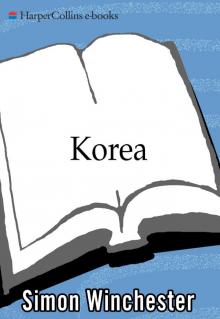 Korea: A Walk Through the Land of Miracles
Korea: A Walk Through the Land of Miracles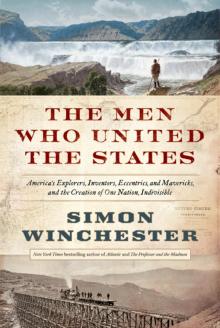 The Men Who United the States: America's Explorers
The Men Who United the States: America's Explorers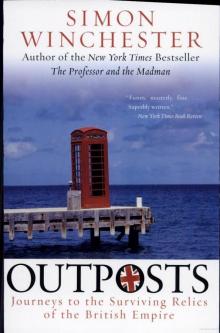 Outposts: Journeys to the Surviving Relics of the British Empire
Outposts: Journeys to the Surviving Relics of the British Empire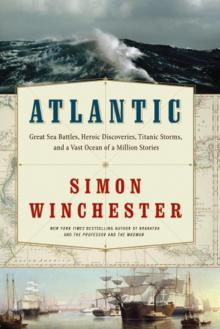 Atlantic: Great Sea Battles, Heroic Discoveries, Titanic Storms
Atlantic: Great Sea Battles, Heroic Discoveries, Titanic Storms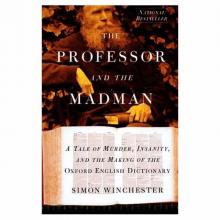 The Professor and the Madman: A Tale of Murder, Insanity
The Professor and the Madman: A Tale of Murder, Insanity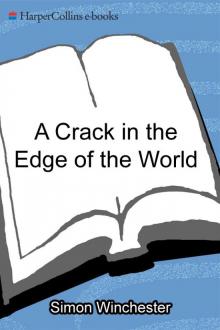 A Crack in the Edge of the World
A Crack in the Edge of the World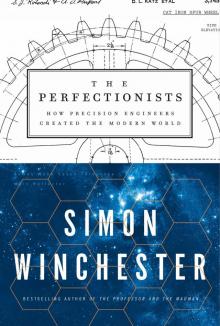 The Perfectionists: How Precision Engineers Created the Modern World
The Perfectionists: How Precision Engineers Created the Modern World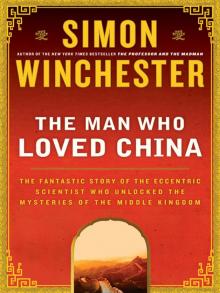 The Man Who Loved China: The Fantastic Story of the Eccentric Scientist
The Man Who Loved China: The Fantastic Story of the Eccentric Scientist The River at the Center of the World: A Journey Up the Yangtze
The River at the Center of the World: A Journey Up the Yangtze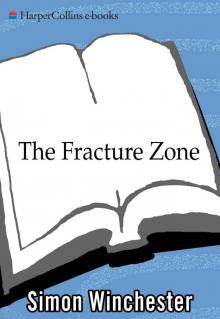 The Fracture Zone: My Return to the Balkans
The Fracture Zone: My Return to the Balkans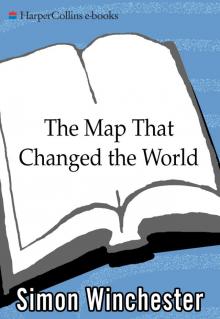 The Map That Changed the World
The Map That Changed the World Krakatoa: The Day the World Exploded
Krakatoa: The Day the World Exploded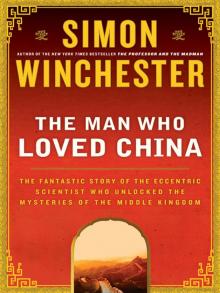 The Man Who Loved China
The Man Who Loved China The River at the Centre of the World
The River at the Centre of the World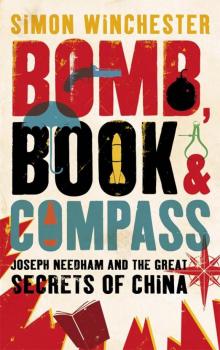 Bomb, Book and Compass
Bomb, Book and Compass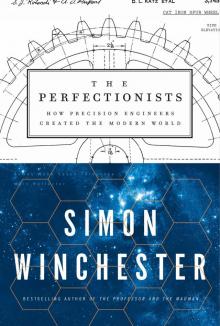 The Perfectionists
The Perfectionists The Meaning of Everything
The Meaning of Everything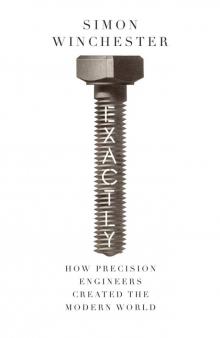 Exactly
Exactly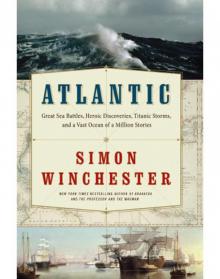 Atlantic
Atlantic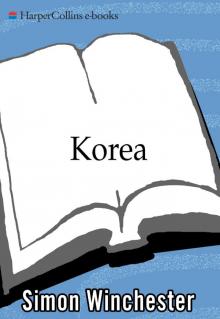 Korea
Korea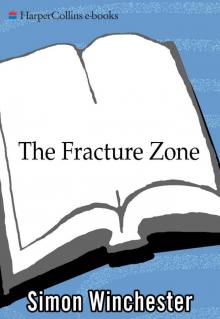 The Fracture Zone
The Fracture Zone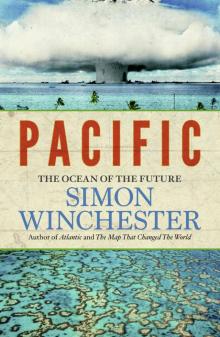 Pacific
Pacific Krakatoa
Krakatoa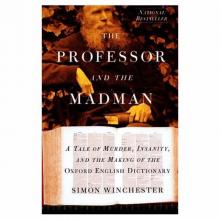 The Professor and the Madman
The Professor and the Madman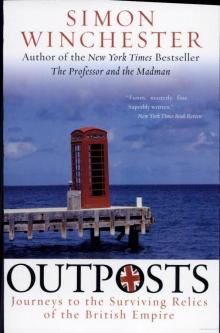 Outposts
Outposts